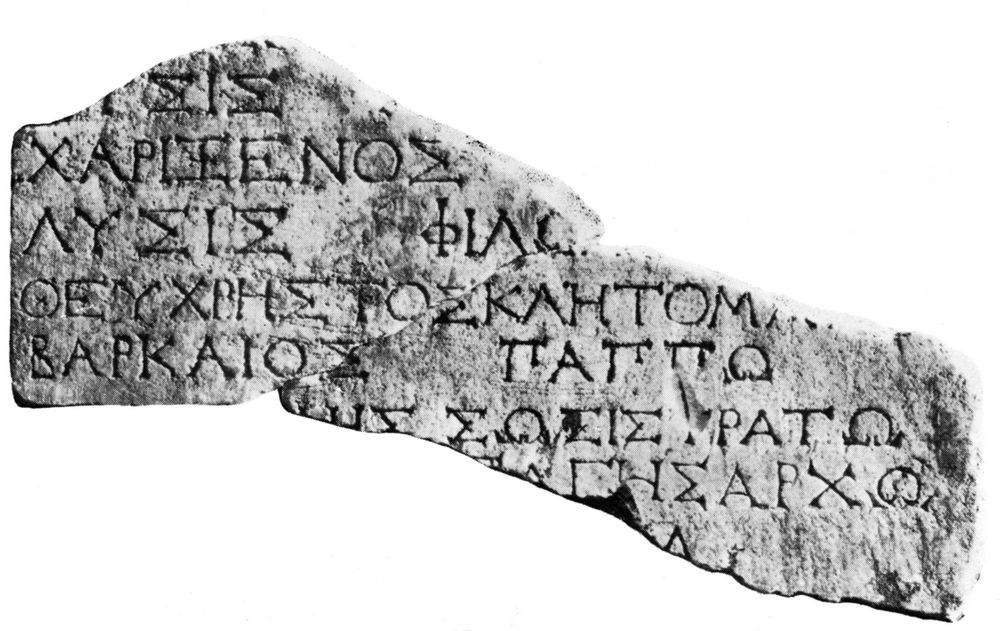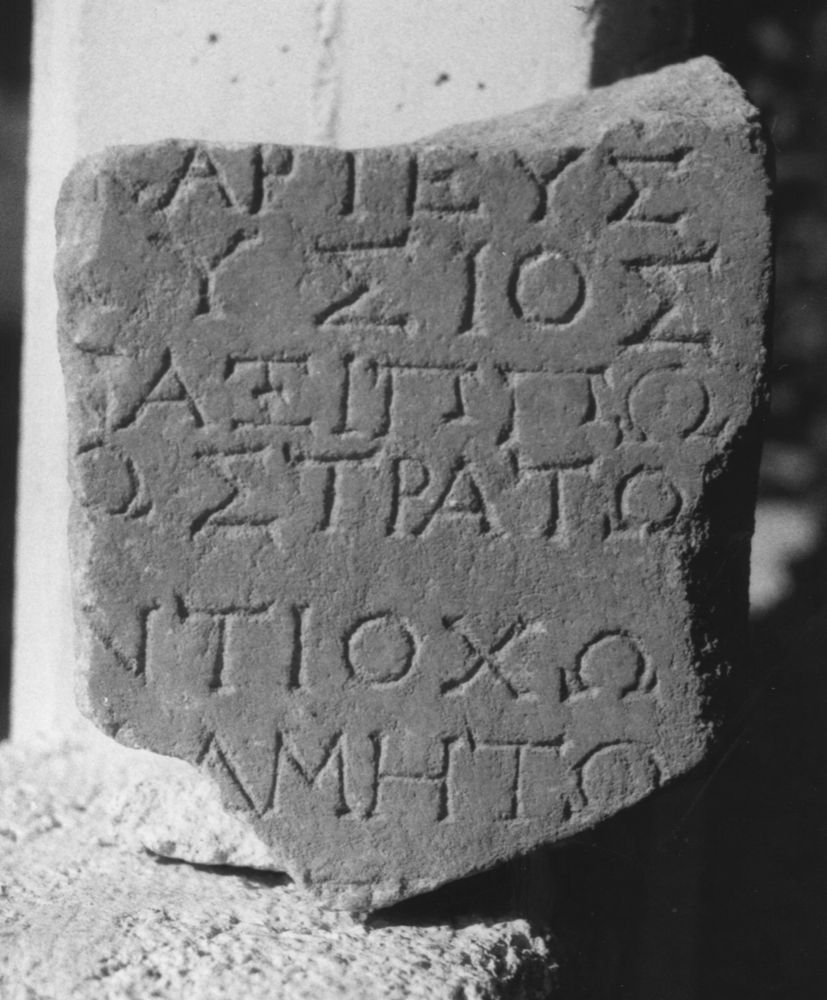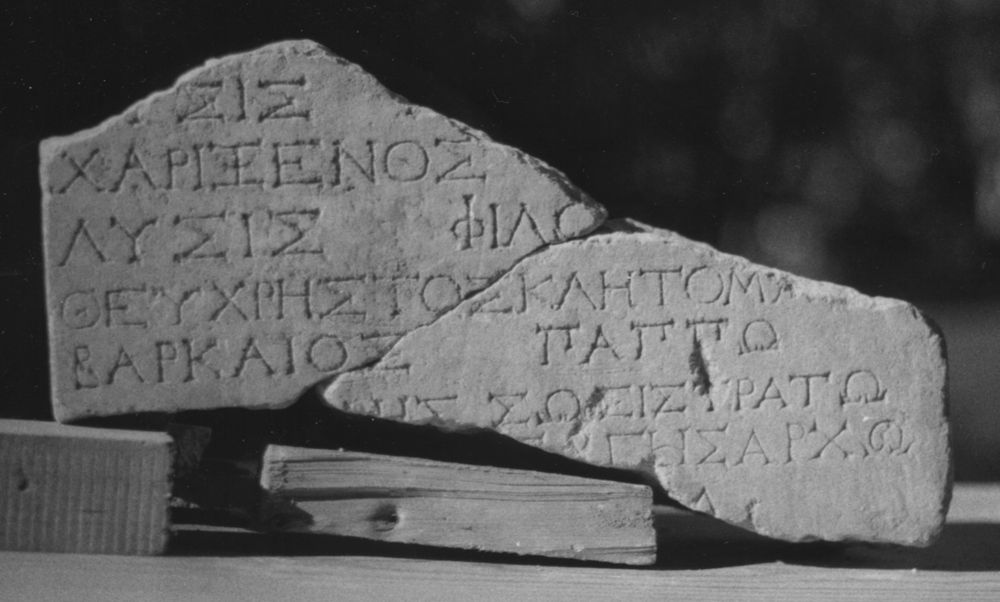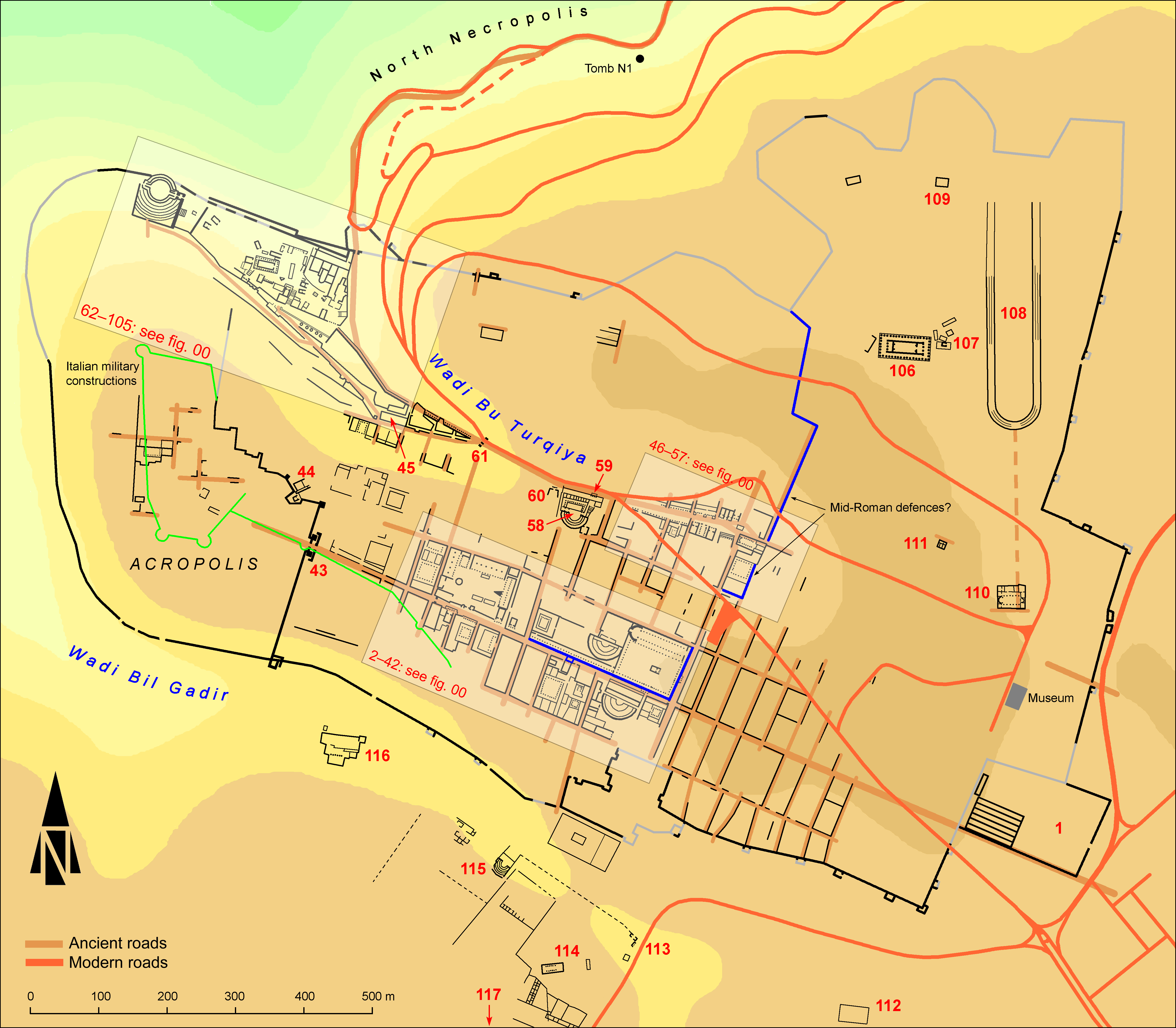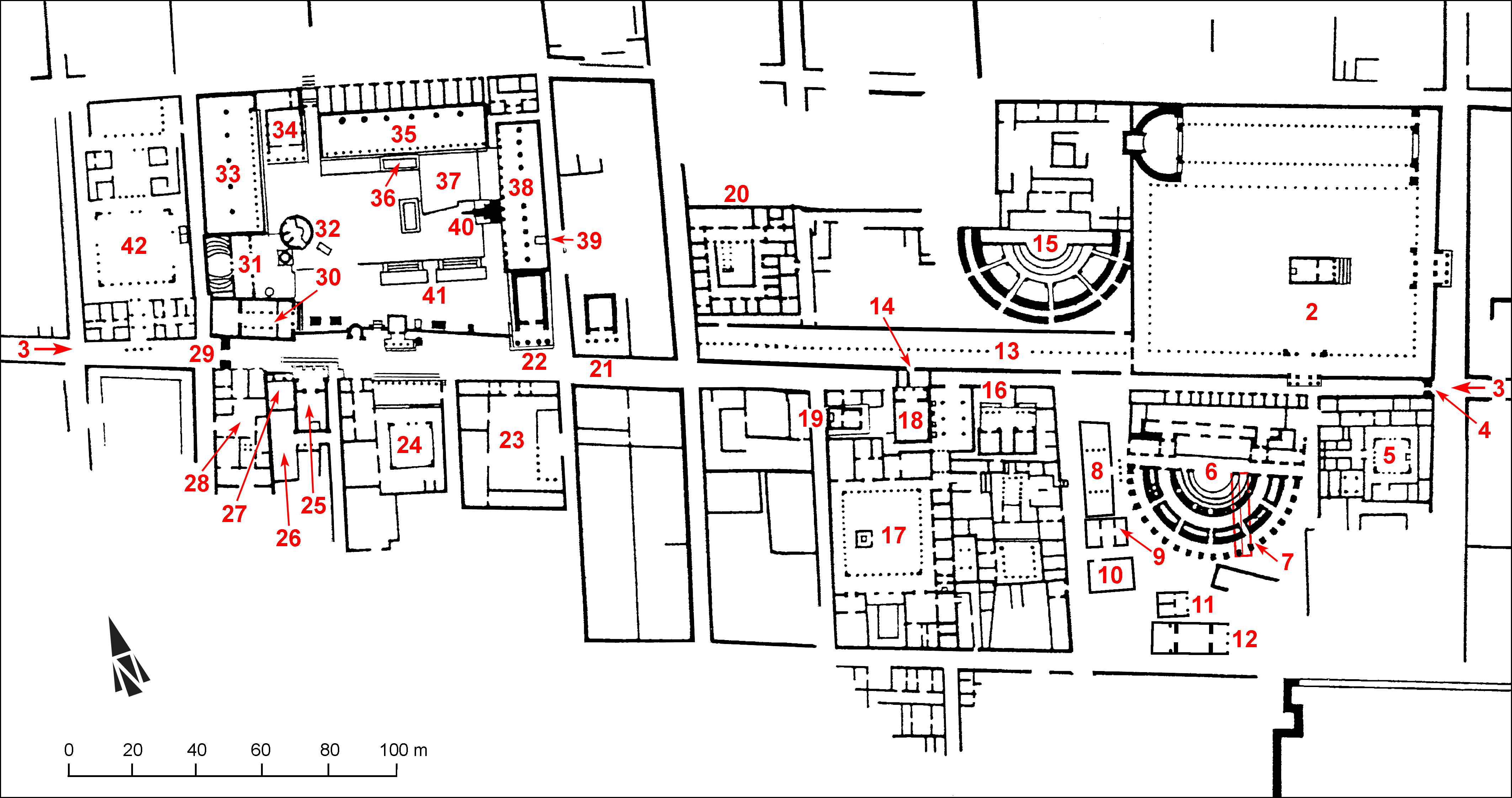EpiDoc XML:
IGCyr1070002
Trismegistos ID:
738596
Source description
Support: Two non adjacent fragments of a white marble panel; fragment a is broken off above, below and at left and its right margin is preserved (w: 0.175 × h: 0.200 × d: 0.105); fragment b is broken off obliquely from upper left to lower right with both margins preserved on some extent (w: 0.43 × h: 0.165 × d: 0.095).
Layout: Inscribed on the face with spaces between letters and between names varying at each line.
Letters: Hand 1: 0.018, serifs; slightly slanting sigma. Hand 2: 0.024, serifs; smaller omicron, slightly slanting sigma. Hand 3: 0.019, serifs; xi with central vertical bar, slightly projecting upper bar of pi. Hand 4: 0.019, serifs; non-slanting sigma; smaller omega. Hand 5: 0.02, serifs; smaller circular letters. Hand 6: 0.02, serifs. Hand 7: 0.019, serifs; non-slanting sigma. Hand 8: 0.02, serifs; xi with central vertical bar, non-slanting sigma. Hand 9: 0.02-0.26, serifs; non-slanting sigma, phi with low and oval loop. Hand 10: 0.017, serifs; rho with small loop, non-slanting sigma, calice-shaped upsilon. Hand 11: 0.016-0.019, serifs; beta with larger and nearly triangular lower loop, pi with projecting upper bar, non-slanting sigma. Hand 12: 0.016, serifs; non-slanting sigma. Hand 13: 0.019, serifs; rho with small loop, non-slanting sigma.
Date: Plausibly second half of second century BC (lettering, office).
Findspot: Both fragments found together in 1958 at Cyrene ➚: Agora North-West corner, in a pit digged in antiquity along the Western side of the Augusteum.
Place of origin: Findspot.
Last recorded location: Seen by L. Gasperini in 1960 or 1961 in Shahat: Storeroom of the Italian missions. Lower part of fragment b seen by E. Rosamilia in 2012-2012 at the same place.
Text constituted from: Transcription from previous editor (CDL).
Bibliography
Gasperini – Stucchi 1965, pp. 249-250, and pl. XLI, 1 (= Gasperini – Arnaldi – Marengo 2008, pp. 33-35); Gasperini 1967, p. 169, nn. 18-19, and fig. 203 (= Gasperini – Arnaldi – Marengo 2008, pp. 82-83); Dobias-Lalou 2016, pp. 254-257, n. 27, whence SEG, 66.2328; IGCyr 107000 ➚; Rosamilia 2023, pp. 129-130 and pp. 263-264, number 14 (text).
Text
Apparatus
a.1: [---]κάρτ̣ευς Gasperini 1967: [---]ΚΑΡΙΕΥΣ Gasperini – Stucchi 1965
b.3: Φιλω[c. 2 - 3]: Φίλω[νος] Gasperini – Stucchi 1965, Gasperini 1967; Φίλω[νος?] Rosamilia 2023
b.6: [Φιλοθά?]λ̣ης: [---]ης Gasperini 1967; [---]η̣ς Gasperini – Stucchi 1965
b.7: [---]ς: [--- οἱ ἐ?]π̣' Ἁγησάρχω Gasperini 1967; [--- Ἐ?]π̣α̣γησάρχω Gasperini – Stucchi 1965
French translation
(a) [--- Untel] fils de [---]kartès, [Untel] fils de Lysis, [Untel] fils d'Anaxippos, [Untel] fils de Sôstratos, [Untel] fils d'Antiokhos, [Untel] fils d'Admètos, [---].
(b)[---], Lysis [fils d'Untel], Kharixenos [fils d'Untel], Lysis fils de Philô[---], Theukhrestos fils de Klètomakhos, Barkaios fils de Pappos, [Philothal]ès fils de Sôsistratos, [---] []s fils d'Hagèsarkhos, [---].
English translation
(a) [--- So-and-so] son of [---]kartes, [So-and-so] son of Lysis, [So-and-so] son of Anaxippos, [So-and-so] son of Sostratos, [So-and-so] son of Antiochos, [So-and-so] son of Admetos, [---].
(b) [---], Lysis [son of So-and-so], Charixenos [son of So-and-so], Lysis son of Philo[---], Theuchrestos son of Kletomachos, Barkaios son of Pappos, [Philothal]es son of Sosistratos, [---]s son of Hagesarchos, [---].
Italian translation
(a) [--- il tale] figlio di [---]kartes, [il tale] figlio di Lysis, [il tale] figlio di Anaxippos, [il tale] figlio di Sostratos, [il tale] figlio di Antiochos, [il tale] figlio di Admetos, [---].
(b) [---], Lysis [figlio del tale], Charixenos [figlio del tale], Lysis figlio di Philo[---], Theuchrestos figlio di Kletomachos, Barkaios figlio di Pappos, [Philothal]es figlio di Sosistratos, [---]s figlio di Hagesarchos, [---].
Commentary
Gasperini already suspected that both fragments might belong to the same list and suggested that fragment a (Gasperini – Stucchi 1965, n. 2; Gasperini 1967, n. 18) might have been inscribed some years earlier than fragment b (Gasperini – Stucchi 1965, n. 1; Gasperini 1967, n. 19). In 1965 he had supposed that this might be a list of priests, but in 1967 he changed his mind because of what seemed to him the formula of a date through an eponymous priest at b.7. C. Dobias-Lalou, helped by the excellent photographs, suggested at IGCyr a new reading of that line. The hypothesis of a unique list of priests with names cut successively at different times was thus reinforced and both fragments were presented together.
Rosamilia 2023 infers from the findspot on the agora that the priests might be those of Zeus Soter, for whose cult see IGCyr1000002 and IGCyr0645002. Moreover, he suggests that this first cult to Zeus on the agora was later associated with the cult of Augustus.
About the date, Gasperini had some inconsistency (perhaps due to a misprint). At Gasperini – Stucchi 1965 he gave III century BC, whereas at Gasperini 1967 he gave II-I BC. C. Dobias-Lalou agrees with J.M. Reynolds who, advising Fraser – Matthews 1987 about the different names, proposed II BC. Rosamilia 2023 limited the period on behalf of both the lettering and the content.
At b.3 both Φίλω[νος] and Φιλώ[τα] are plausible restorations.
At b.6, from the photograph, C. Dobias-Lalou sees the summit of the apex of a lambda, which allows for a compound in -θάλης. A common name in Cyrenaica is [Φιλοθά]λ̣ης which would fit the gap perfectly.
CC BY-NC-SA 4.0 Deed Attribution-NonCommercial-ShareAlike 4.0 International License.
All citation, reuse or distribution of this work must contain a link back to DOI: https://doi.org/10.60760/unibo/igcyrgvcyr2 and the filename (IGCyr000000 or GVCyr000), as well as the year of consultation.

